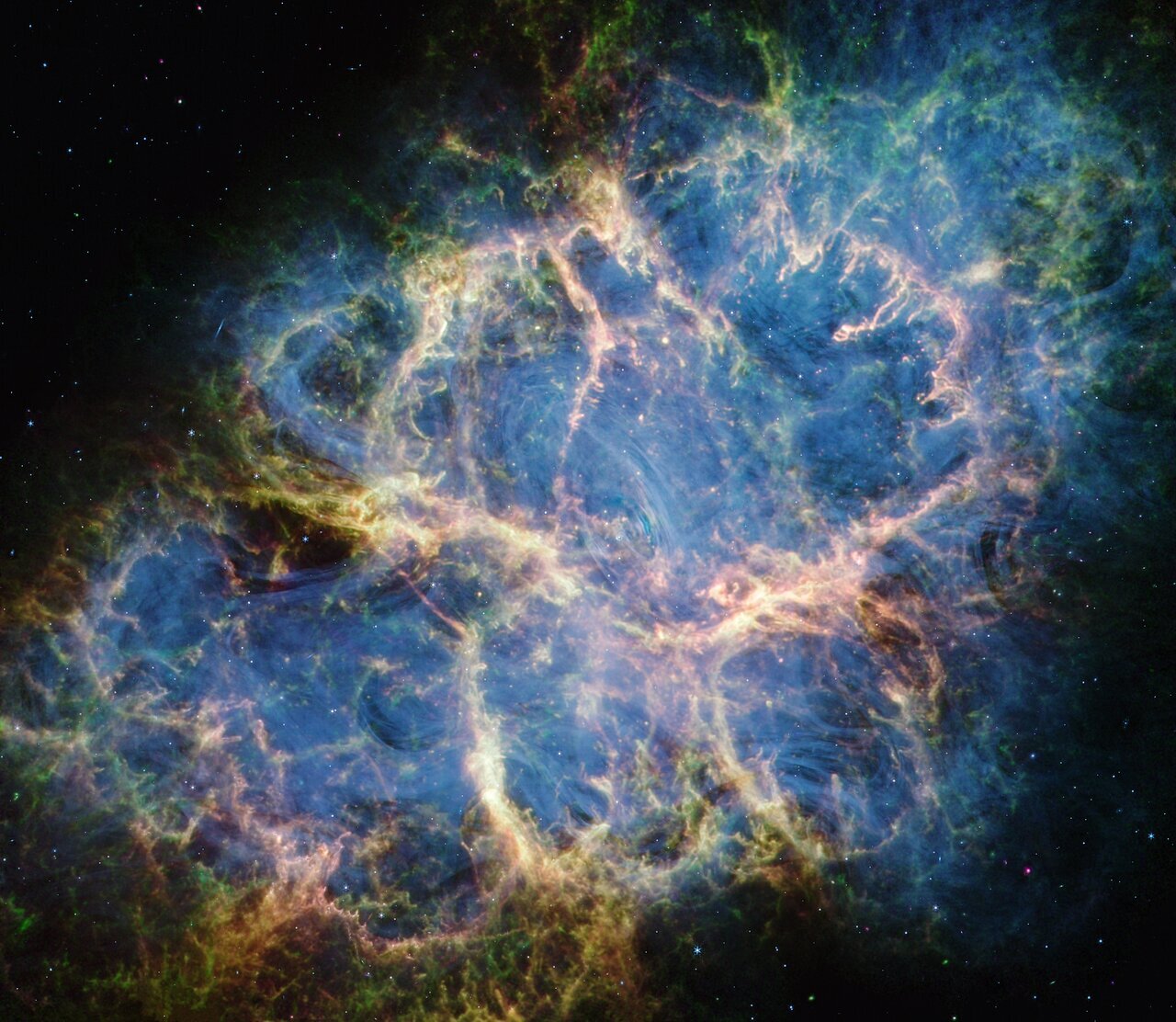The Crab Nebula is a supernova remnant with unusual properties. Scientists used the James Webb Space Telescope to clarify its chemical composition and learn how it was formed.

How the Crab Nebula was formed
A team of scientists used the James Webb Space Telescope to investigate the composition and origin of the Crab Nebula. This unusual supernova remnant is 6,500 light years away from us in the direction of the constellation Taurus. Once upon a time there was a giant star here that exhausted its thermonuclear fuel and exploded.
In 1054, the light from this flare reached the Earth. It could be seen even during the day. However, after a few months, it disappeared. And a few centuries later, a much fainter object, the Crab Nebula, was seen at this location. It is a cloud of gas rapidly expanding in space. At its center is the core of a dead star that has turned into a neutron star.
In this case, the Crab Nebula is a rather unusual supernova remnant. The weak energy of the explosion and the composition of the present-day cloud has led scientists to believe that in this case we are dealing with an electron-capture supernova. They form with a relatively light core consisting of neon, oxygen, and magnesium, which is quite different from the classical cases where iron and nickel accumulate in the center.
If the Crab Nebula did form in this way, the star from which it arose must have had a mass of 8 to 10 solar masses. That is, to represent something between those luminaries that explode as supernovae and those that turn first into a red giant and then into a white dwarf.
Doubts about the correctness of the theory
In recent years, scientists have increasingly doubted that the Crab Nebula was formed by an electron-capture supernova outbreak. They learned more about the flares of iron-core stars and concluded that they could produce low-power explosions too.
And the chemical composition of the nebula raises a lot of questions. It was seriously investigated in the late 1980s and early 1990s and showed an elevated iron to nickel ratio. This is exactly characteristic of electron-capture supernovae.
The new study used data from the MIRI and NIRCam cameras on the James Webb Space Telescope. They were used to study two small regions inside the nebula where material from the core of the dead star should have been located.
Research results
These studies have shown that within the Crab Nebula, there is indeed an elevated iron content relative to nickel. However, its magnitude is much lower than previously thought. It quite accepts the possibility that the Crab Nebula was indeed formed by a classical supernova outbreak with an iron core.
In addition, the scientists conducted a study of the Crab Nebula as a whole. They investigated the nature of synchrotron radiation caused by dust in its surroundings. Scientists have found out that there is a lot of it there. And the warmest is in the outer fibers, not in the inner fibers. They also made a map of its distribution.
According to phys.org


